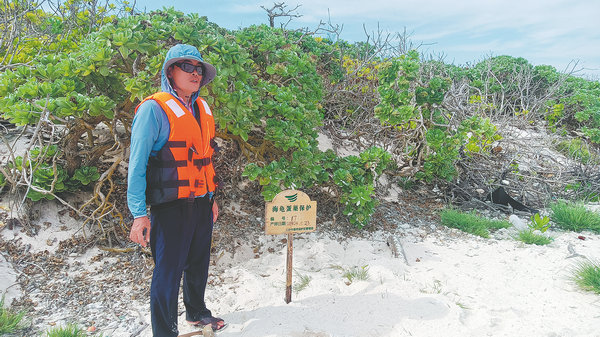

HAIKOU — In the turquoise waters and along the stunning coastlines of the Xisha Islands in the South China Sea, a crucial mission has been quietly taking shape, namely the protection of sea turtles.
Conservation efforts are showing tangible results, with 115 nests discovered in the islands between January and mid-August this year, according to the marine reserve management bureau of Sansha city in Hainan province.
After years of protection and environmental restoration, 1,734 nests containing green sea turtle eggs were found between 2017 and 2023, according to bureau officials.
The islands are an important habitat for green sea turtles. Ninety percent of China's sea turtle population are found in the South China Sea, of which green sea turtles account for more than 80 percent.
Since the 1980s, global populations and habitats have experienced a sharp decline due to long-term overfishing, illegal trade, marine pollution and human activities, compounded by climate change.

To address these threats, Sansha has implemented a protection system for sea turtles that is based on 24-hour monitoring and the protection of nesting turtles, as well as the development of key conservation policies.
A sea turtle protection center has been set up on Beidao Island, which is part of the Xisha Islands, where research teams from a number of universities have set up labs and research centers. The teams are conducting studies on the status of green sea turtle populations, the sea turtle environment and conservation biology.
"With the support and help of local government, we did research on 11 islands and reefs in the Xisha Islands," says Zhang Ting, a researcher from Hainan Normal University.
"We surveyed the situation facing sea turtles, and obtained a lot of precious data and samples," Zhang adds.
Sea turtles have been listed in Appendix I of the Convention on International Trade in Endangered Species of Wild Fauna and Flora, signaling their endangered status.
In February 2021, China's revised national list of key protected wild animals included five species of sea turtles as top-priority protected wildlife.